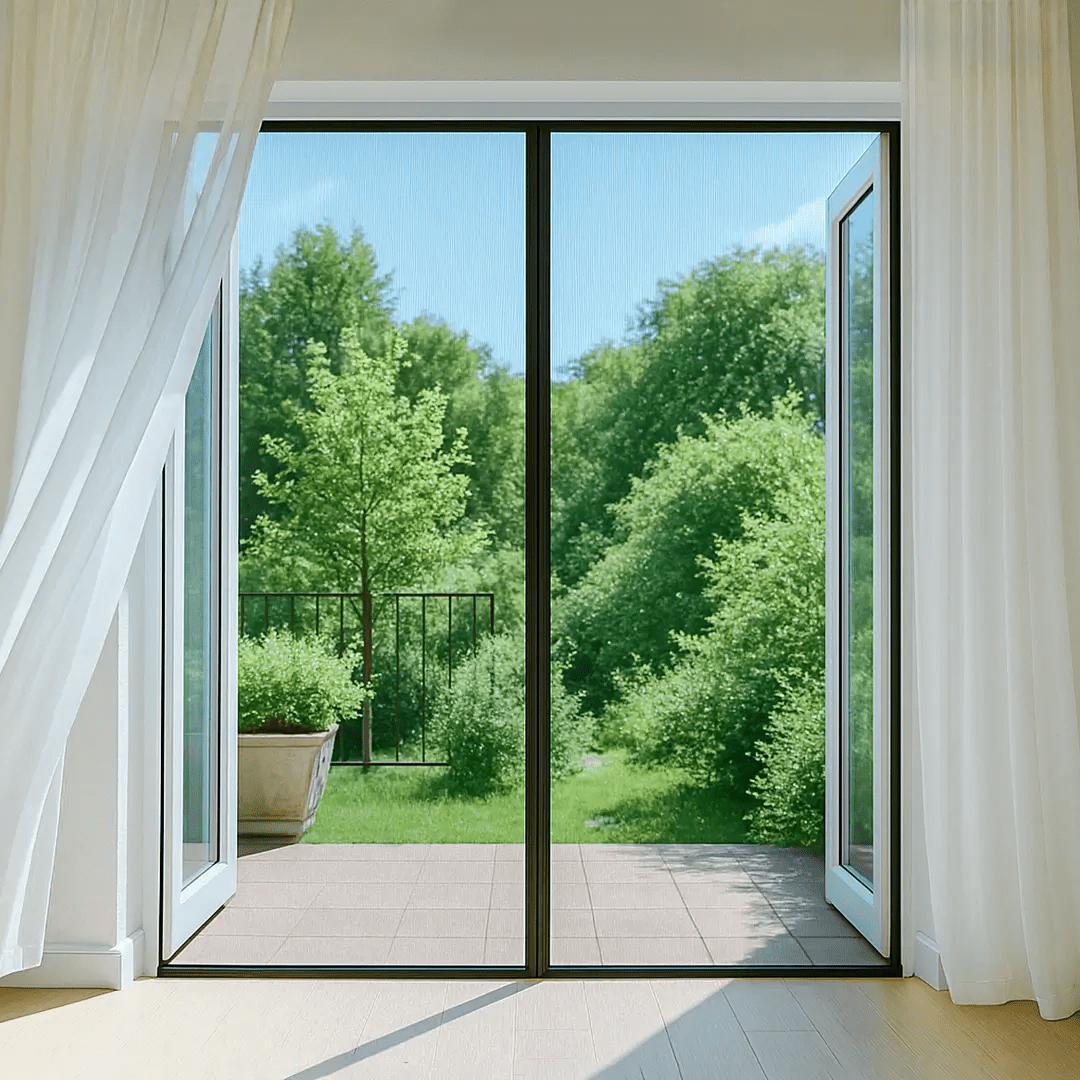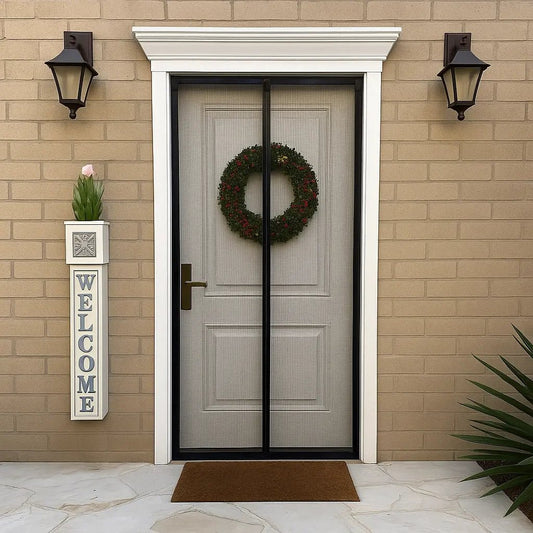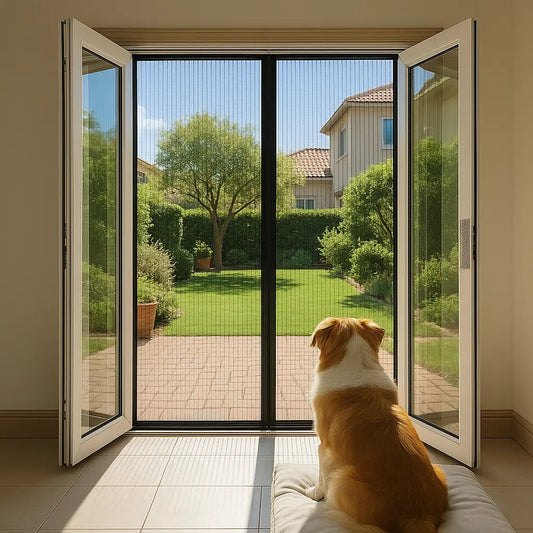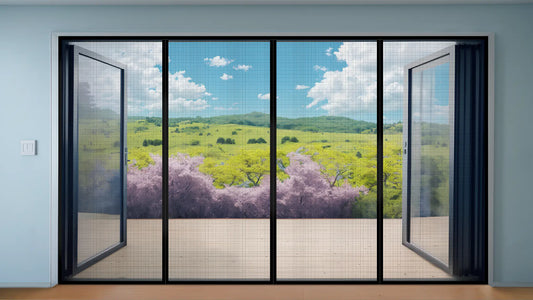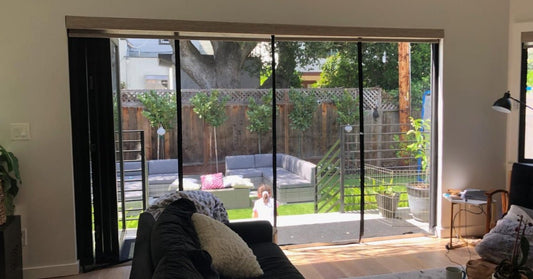The Enduring Appeal of Aluminum: A Guide to Using an Aluminum Mesh Screen Roll
Y.Walter
When it comes to screening your windows and doors, the material you choose makes all the difference in durability, visibility, and overall aesthetic. While standard fiberglass is common, for those seeking a sharper view and a more robust, long-lasting solution, the aluminum mesh screen roll is a classic and highly popular choice. An aluminum mesh screen offers a crisp, metallic finish that provides excellent clarity and resists the sagging that can plague other materials over time.
This guide is for the homeowner and DIY enthusiast looking to work with this durable material. We'll dive deep into the world of the aluminium screen roll, exploring its benefits and drawbacks. We'll discuss what makes a heavy duty aluminum screen mesh different from standard grade, and we'll provide a comprehensive, step-by-step guide on how to install it yourself for a professional-looking finish. Whether you're re-screening a single window or outfitting an entire porch, understanding how to work with an aluminium mesh screen will empower you to complete your project with confidence. We’ll also look at how aluminum fits into the broader category of a metal mesh screen roll and when a full system replacement might be a better alternative to a simple re-screening project.
What is Aluminum Mesh Screen and Why Choose It?
An aluminum mesh screen is a type of screening fabric woven from fine aluminum wires. It's then typically coated with a protective finish (often a charcoal or black color) to reduce glare and resist corrosion. It is sold in large rolls of various widths and lengths, making it ideal for custom and DIY projects.
So, why would you choose an aluminium screen roll over other materials like fiberglass?
- Excellent Visibility and Clarity: Aluminum mesh provides a crisp, clear view to the outdoors. The fine, rigid wires tend to be less obtrusive to the eye than the thicker strands of some other materials.
- Superior Strength and Durability: It is more puncture and tear-resistant than standard fiberglass, making it a good choice for high-traffic areas.
- Does Not Sag: Due to its metallic nature, aluminum mesh holds its tension very well over time and will not sag from sun exposure or age, a common problem with fiberglass.
- UV Resistant: Aluminum is inherently resistant to damage from the sun's ultraviolet rays, so it won't become brittle or break down like some other materials might after years of exposure.
- A Classic, High-Quality Look: The finish of an aluminum screen has a distinct, high-quality appearance that many homeowners prefer.
Things to Consider: The Downsides of Aluminum Mesh
While it has many benefits, there are a few things to keep in mind:
- Prone to Creasing and Denting: This is the main drawback. If an object forcefully impacts the screen, or if it's bent during installation, it can create a permanent crease or dent in the mesh. It is not as forgiving as flexible fiberglass.
- Can Be More Difficult to Install: Because it is more rigid, it can be slightly more challenging for a beginner to roll into the spline channel without creating creases. It requires a bit more patience.
- Corrosion in Coastal Areas: In salt-air environments (like coastal regions), standard aluminum can corrode over time. If you live near the coast, you may want to look for specially coated aluminum or consider bronze or fiberglass alternatives.
Standard vs. Heavy Duty Aluminum Screen Mesh
When you shop for an aluminum mesh screen roll, you might see "standard" and "heavy-duty" options.
- Standard Aluminum Screen: This is perfect for most residential windows and areas with low traffic. It offers a great balance of visibility and durability.
-
Heavy Duty Aluminum Screen Mesh: This type is made with a thicker gauge aluminum wire. It is significantly more resistant to damage and is an excellent choice for:
- Doors in high-traffic areas.
- Homes with pets (though not as tear-proof as dedicated pet screen, it's much tougher than standard fiberglass).
- Areas where the screen might be subject to more abuse. The trade-off is that heavy-duty mesh can be slightly more expensive and may marginally reduce visibility and airflow compared to the standard fine-wire version.
Aluminum vs. Other Metal Mesh Screen Roll Options
Aluminum is the most common type of metal mesh screen roll for residential use, but there are others:
- Steel Screen: Very strong and durable, but it can rust if the protective coating is scratched. Often used in security screen doors.
- Bronze Screen: Made of 90% copper and 10% zinc, it is very strong and durable. It weathers to a beautiful dark bronze patina. It's an excellent choice for coastal areas as it resists corrosion, but it is also significantly more expensive.
- Stainless Steel Screen: Offers excellent strength and corrosion resistance, but like bronze, it comes at a premium price.
For most homeowners, aluminum provides the best balance of durability, visibility, and cost among metal screen options.
SORA_PROMPT: A tight, focused shot of a brand new aluminum mesh screen roll partially unfurled on a clean wooden workbench. The metallic weave of the screen catches the light beautifully, showing its crisp, clean texture. In the background, a person's hands can be seen measuring a window frame, preparing for the DIY project. The atmosphere is that of a precise, quality-focused workshop.
A DIY Guide: Installing Your Aluminium Mesh Screen from a Roll
Ready to re-screen your window or door with your new aluminium screen roll? This project requires patience but is very rewarding.
Tools and Materials Needed
- Your roll of aluminum mesh screen
- Screen spline of the correct diameter for your frame
- A spline roller tool (this is essential)
- A hacksaw (if you also need to cut a new frame)
- A utility knife with a fresh, sharp blade
- A flathead screwdriver or awl
- Measuring tape
- Work gloves (aluminum edges can be sharp)
- A large, flat work surface
Step-by-Step Installation Process
1. Prepare Your Frame:
- Remove the screen frame from the window or door and lay it on your flat work surface.
- Use a screwdriver or awl to carefully pry up one end of the old spline. Pull the entire spline out of the channel.
- Remove the old mesh and clean the frame and spline channel thoroughly.
2. Cut Your New Aluminum Mesh:
- Unroll your new aluminum mesh screen over the frame.
- Ensure it overlaps the spline channel by at least an inch on all four sides.
- Using your utility knife and a straight edge (or strong scissors), carefully cut the mesh to size.
3. Begin the Installation:
- Lay the new piece of mesh over the frame, ensuring it is straight and the weave is aligned with the frame edges.
- Crucial Tip for Aluminum: Because it creases easily, you need to be gentle. Avoid hard pressure or sharp folds.
- Starting on one side (let's say the top), use the convex (rounded) wheel of your spline roller to gently press the mesh into the channel. Do this for the entire length of the first side. This pre-forms a path for the spline.
4. Roll in the Spline:
- Take your new spline and, using the concave (grooved) wheel of your tool, press the spline into the channel over the mesh. Apply steady, even pressure.
- Work Sequentially: Unlike flexible fiberglass where you might create tension by doing opposite sides, with rigid aluminum mesh it's often best to work your way around the frame sequentially (e.g., top, then right side, then bottom, then left side).
- Maintain Alignment: As you work, your primary goal is to keep the mesh weave straight and prevent wrinkles. The tension will come naturally from the tight fit of the spline in the groove. Pulling too hard on rigid aluminum mesh will cause it to dent or crease.
- Use your screwdriver to gently push the spline into the corners where the roller can't reach.
5. Trim the Excess Mesh:
- Once all four sides are splined in, your mesh should be secure.
- Take your sharp utility knife and carefully trim the excess aluminum mesh. Hold the knife at a low angle and cut along the outside edge of the spline. Be very careful not to slice the new spline itself.
6. Reinstall the Screen:
- Your frame is now re-screened and ready to be popped back into your window or door.
This process, while detailed, is the key to successfully working with an aluminum mesh screen roll.
When is Re-screening the Best Choice (And When Is It Not)?
Re-screening with a durable heavy duty aluminum screen mesh is a fantastic option if:
- Your screen frame is still straight, square, and in good condition.
- The only problem with your screen is the mesh itself.
- You're on a budget and want to extend the life of your existing doors or windows.
However, if your screen door or window frame is bent, warped, has broken corners, or if mechanical parts like rollers and handles are constantly failing, simply replacing the mesh is a temporary fix for a larger problem. You're putting a new screen on a failing system. In these cases, a full replacement of the entire screen unit is often a better long-term investment.
The Modern Alternative: Complete, Custom-Fit Screen Systems
If you find that your door frame is old and rickety, or if the meticulous process of re-screening with rigid aluminum mesh seems too challenging, you might consider a complete system upgrade. This is where modern solutions, like a custom-fit magnetic screen door from Coverwith, offer a compelling alternative for your doorways.
Why Consider This Alternative?
- Solves All Problems at Once: A brand new magnetic screen door system replaces your old frame, mesh, rollers, and handle issues in one go.
- Simplicity: The installation of a Coverwith screen is often far simpler than a DIY re-screening project. There's no spline, no special tools, and no risk of creasing a rigid mesh. It’s a tool-free, adhesive-based installation that takes minutes.
- Different Material, Different Benefits: While this article focuses on aluminum, it's worth noting that Coverwith screens use a durable, flexible fiberglass-based mesh. This material won't dent or crease like aluminum, making it very forgiving and safe for high-traffic areas or homes with pets who might bump into it.
- Custom Fit Without the DIY Hassle: You get the benefit of a screen made to your opening's exact dimensions, but without the work of building or re-screening the frame yourself.
So, while learning to work with an aluminum mesh screen roll is a great skill for window repair, when it comes to doorways with more complex issues, a complete system replacement can offer better value, performance, and convenience.
Maintaining Your Newly Installed Aluminum Screen
To keep your new aluminum mesh screen looking its best:
- Clean Gently: Use a soft brush or a cloth with mild soap and water to gently clean the screen. Avoid harsh chemicals or abrasive brushes that could damage the finish.
- Avoid Impacts: Be mindful of the screen to prevent dents. Teach kids not to push on it.
- Rinse Regularly in Coastal Areas: If you do use it near the coast, a gentle rinse with fresh water can help wash away salt deposits and prolong its life.
Conclusion: The Crisp, Durable Choice for Your Screens
The aluminum mesh screen roll remains a top choice for homeowners and DIYers who value durability, longevity, and a crisp, clear view. By choosing the right grade—whether standard or heavy duty aluminum screen mesh—and taking the time to install it carefully, you can create professional-quality screens that will last for years. It’s a project that requires patience but rewards you with a functional and beautiful result.
And remember, while repairing and re-screening is a valuable skill, it's also smart to know when to opt for a full upgrade. For problematic doorways, exploring modern, all-in-one systems like a custom-fit magnetic screen door can save you time and frustration, delivering an even higher level of convenience and performance. Whatever you choose, a well-screened home is a more comfortable home.
Ready to Tackle Other Screen Door Projects?
You've just learned the ins and outs of working with aluminum screen mesh. If you're ready to apply your skills to a full door project or are curious about the best ways of attaching a screen door of any type to your home's entryways, our comprehensive pillar page is your ultimate resource for tips, techniques, and installation guides.
[Master Your Screen Door Installation Skills]
Frequently Asked Questions About Aluminum Screen Mesh
Is aluminum mesh screen better than fiberglass screen?
It depends on the application. Aluminum is more durable, offers better visibility, and doesn't sag. Fiberglass is more affordable, more flexible (it won't crease or dent), and is easier for beginners to install. For a crisp, long-lasting result where denting isn't a major concern, many prefer aluminum.
What is an aluminium screen roll? Is it different from aluminum?
No, they are the same product. "Aluminium" is the standard international and British spelling, while "aluminum" is the standard American spelling. You will see both terms used, but they refer to the same metal mesh material sold in rolls.
How do I choose between standard and heavy duty aluminum screen mesh?
For most standard windows in low-traffic areas, standard aluminum mesh is perfectly sufficient. For screen doors, high-traffic windows, or homes with pets and children, investing in heavy duty aluminum screen mesh is highly recommended as it will be much more resistant to damage.
Can I use the same spline for an aluminium mesh screen as I did for my old fiberglass screen?
Not always. Aluminum mesh is slightly thicker than standard fiberglass mesh. You may need to use a spline with a slightly smaller diameter to ensure it fits properly into the frame's channel without excessive force. It's always best to get new spline when you re-screen.
Is aluminum considered a metal mesh screen roll?
Yes. "Metal mesh screen roll" is a general category. Aluminum is the most common type for residential use, but this category also includes other metals like steel, stainless steel, and bronze.
